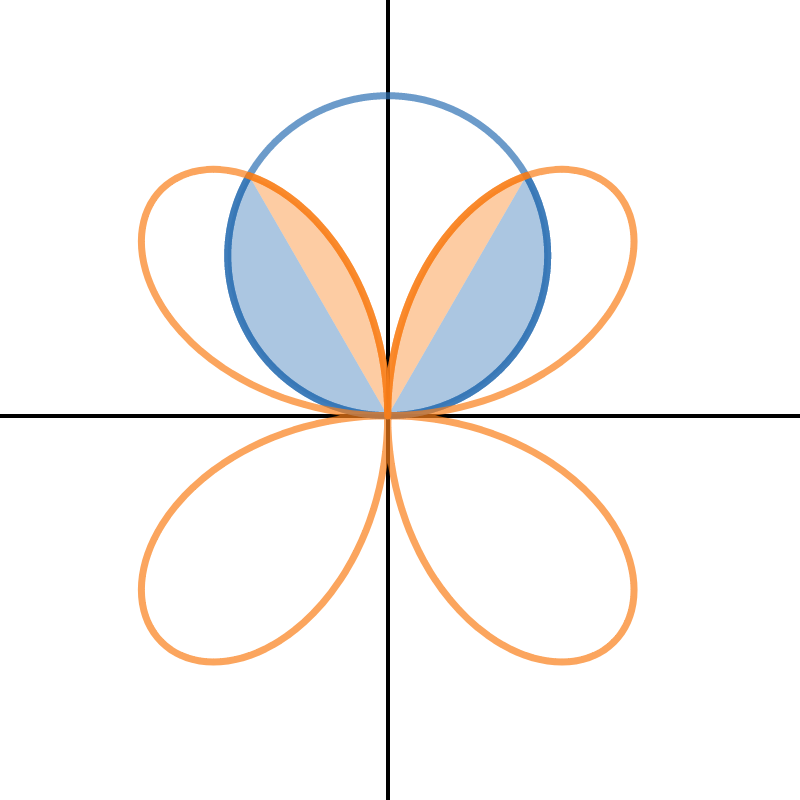Volume of Solids of Revolution using Polar Coordinates 2

Find the volume formed when the region inside and is revolved about the x axis.
Express the volume to seven decimal places.
The answer is 1.0237294.
This section requires Javascript.
You are seeing this because something didn't load right. We suggest you, (a) try
refreshing the page, (b) enabling javascript if it is disabled on your browser and,
finally, (c)
loading the
non-javascript version of this page
. We're sorry about the hassle.
Note: The volume V = 2 π ∫ ∫ R y d y d x = 2 π ∫ θ 1 θ 2 ∫ 0 r ( θ ) r 2 sin ( θ ) d r d θ = 3 2 π ∫ θ 1 θ 2 ( r ( θ ) ) 3 sin ( θ ) d θ .
r = sin ( θ ) on the branch ( 0 ≤ θ ≤ 3 π ) and r = sin ( 2 θ ) on the branch ( 3 π ≤ θ ≤ 2 π ) .
V = 3 4 π ( ∫ 0 3 π sin 4 ( θ ) d θ + ∫ 3 π 2 π sin 3 ( 2 θ ) sin ( θ ) d θ ) .
Let I 1 = ∫ 0 3 π sin 4 ( θ ) d θ :
I 1 = 4 1 ∫ 0 3 π 2 3 − 2 cos ( 2 θ ) + 2 1 cos ( 4 θ ) d θ = 4 1 ( 2 3 θ − sin ( 2 θ ) + 8 1 sin ( 4 θ ) ) ∣ 0 3 π = 8 π − 6 4 9 3 .
Let I 2 = ∫ 3 π 2 π sin 3 ( 2 θ ) sin ( θ ) d θ :
I 2 = 8 ∫ 3 π 2 π ( sin 4 ( θ ) − sin 6 ( θ ) ) cos ( θ ) d θ = 8 ( 5 sin 5 ( θ ) − 7 sin 7 ( θ ) ) ∣ 3 π 2 π = 5 6 0 2 5 6 − 1 1 7 3
⟹ V = 3 4 π ( I 1 + I 2 ) = π ( 1 6 8 0 2 8 0 π − 7 8 3 3 + 1 0 2 4 ) ≈ 1 . 0 2 3 7 2 9 4 .